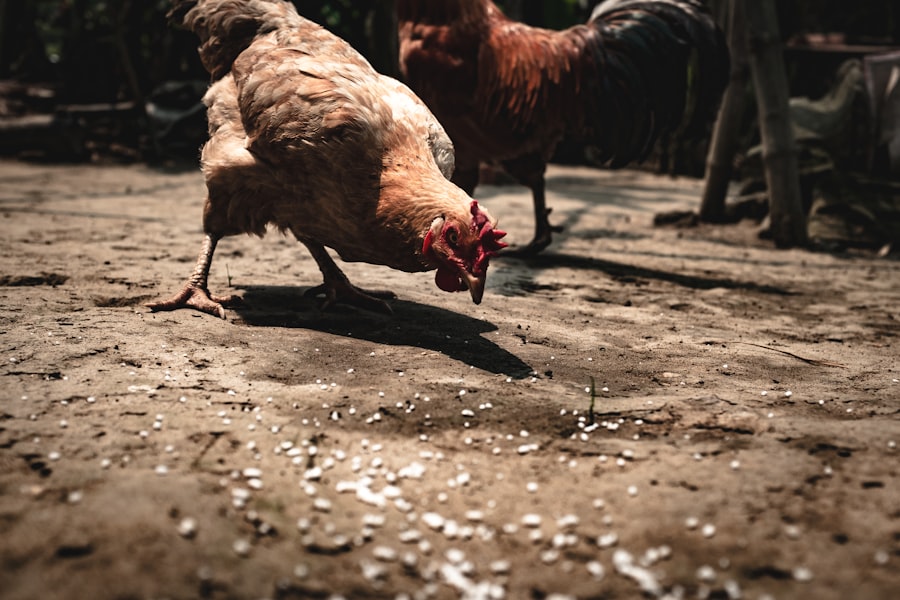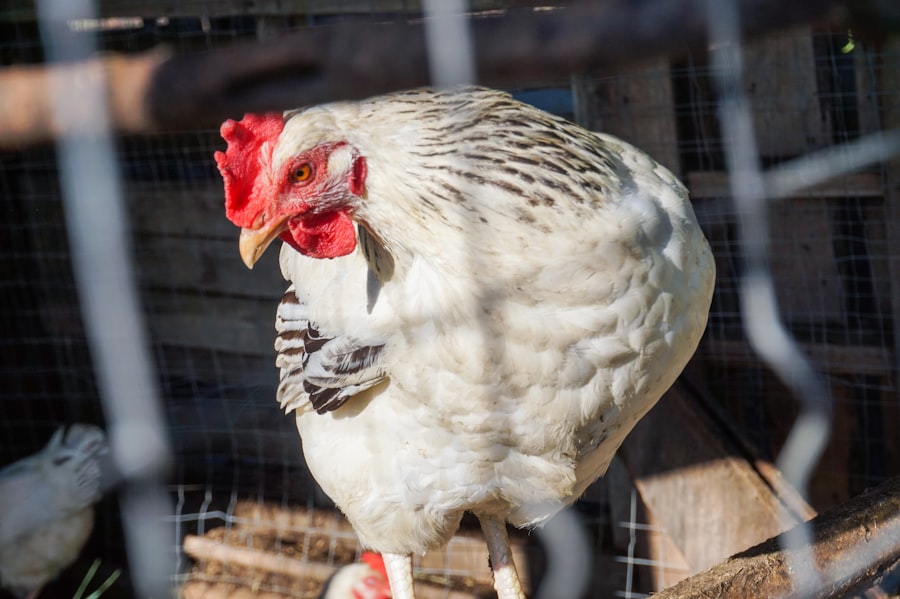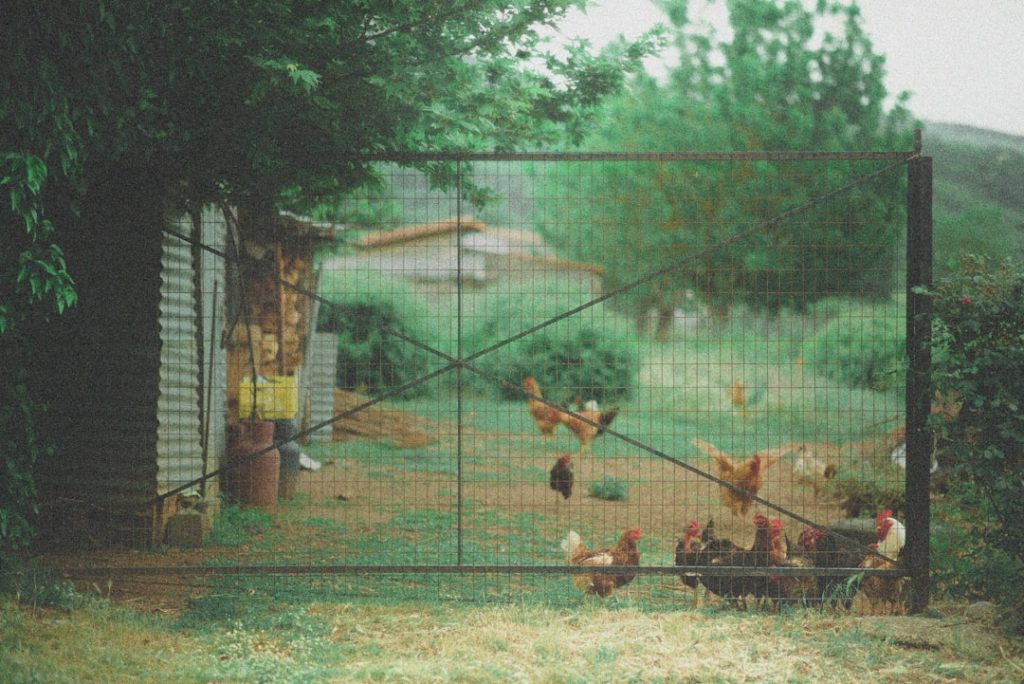Chickens have a natural circadian rhythm influenced by light exposure. In their natural habitat, chickens use the day-night cycle to regulate behavior and physiological processes. This rhythm is essential for their health, well-being, and egg-laying patterns.
As diurnal animals, chickens are most active during daylight hours and rest at night. Their exposure to light regulates their internal clock and hormone production. Light also stimulates the reproductive systems of laying hens.
Daylight duration directly affects egg production by signaling to hens when to begin laying. Egg production naturally increases during spring and summer due to longer days, while it decreases in fall and winter as days shorten. Understanding these light requirements is crucial for creating optimal conditions for egg-laying chickens and maximizing their productivity.
Table of Contents
- 1 The impact of light on egg production in chickens
- 2 How to provide the right amount of light for laying hens
- 3 The importance of consistent lighting for egg-laying chickens
- 4 Managing light exposure for chickens in different seasons
- 5 Common mistakes to avoid when providing light for egg-laying chickens
- 6 Tips for optimizing egg production through proper lighting for chickens
- 7 FAQs
- 7.1 What is the ideal amount of light for chickens to keep laying eggs?
- 7.2 What happens if chickens don’t get enough light?
- 7.3 Can artificial light be used to supplement natural light for chickens?
- 7.4 What type of light is best for chickens?
- 7.5 Are there any negative effects of providing too much light for chickens?
Key Takeaways
- Chickens require natural light for their overall well-being and to regulate their internal clock
- Adequate light exposure can positively impact egg production in chickens
- Providing 14-16 hours of light per day is ideal for laying hens
- Consistent lighting is crucial for maintaining egg-laying productivity in chickens
- Adjusting light exposure based on seasonal changes can help optimize egg production in chickens
The impact of light on egg production in chickens
Photostimulation: Mimicking Natural Daylight
The amount of light that chickens are exposed to has a significant impact on their egg-laying patterns and overall productivity. In commercial egg production, artificial lighting is often used to supplement natural daylight in order to extend the hours of light that hens are exposed to. This practice is known as photostimulation, and it is used to mimic the longer days of spring and summer in order to encourage consistent egg production throughout the year.
The Effects of Light Duration and Intensity
By providing additional light, farmers can effectively trick the hens’ bodies into thinking that the days are longer, which stimulates their reproductive systems and encourages them to lay more eggs. Research has shown that the duration and intensity of light exposure can directly influence the number of eggs laid by hens. In general, hens require a minimum of 14-16 hours of light per day to maintain consistent egg production.
Striking a Balance: Avoiding Negative Effects
However, it’s important to note that excessive light exposure can also have negative effects on their health and well-being. Overexposure to light can disrupt their natural circadian rhythm, leading to stress, decreased immune function, and even behavioral issues. Therefore, it’s crucial to strike a balance and provide the right amount of light to support optimal egg production without compromising the chickens’ welfare.
How to provide the right amount of light for laying hens

Providing the right amount of light for laying hens is essential for maintaining consistent egg production and ensuring the overall health and well-being of the chickens. When it comes to artificial lighting, there are several key factors to consider in order to create an optimal environment for egg-laying hens. First and foremost, it’s important to ensure that the lighting system provides enough intensity to effectively stimulate the hens’ reproductive systems.
This typically involves using high-quality bulbs that emit a sufficient amount of light to mimic natural daylight. In addition to intensity, the duration of light exposure is also a critical factor in supporting egg production. As previously mentioned, hens require a minimum of 14-16 hours of light per day to maintain consistent egg-laying patterns.
This can be achieved by using timers to control the lighting schedule and ensure that the hens are exposed to the appropriate amount of light each day. It’s also important to gradually increase or decrease the amount of light during seasonal transitions in order to mimic natural daylight changes and prevent abrupt disruptions to their circadian rhythm. Furthermore, it’s essential to consider the placement of lighting within the chicken coop or barn to ensure even distribution of light throughout the space.
This can help prevent stress and aggression among the hens by creating a more uniform environment. By carefully managing the intensity, duration, and distribution of light, farmers can provide the right amount of artificial lighting to support optimal egg production and promote the overall well-being of their laying hens.
The importance of consistent lighting for egg-laying chickens
Consistency is key when it comes to providing lighting for egg-laying chickens. Maintaining a consistent lighting schedule is essential for regulating the hens’ reproductive systems and ensuring steady egg production throughout the year. Sudden changes in lighting can disrupt their natural circadian rhythm and lead to stress, which can negatively impact their health and productivity.
Therefore, it’s crucial to establish a reliable lighting schedule and stick to it consistently. In addition to maintaining a consistent lighting schedule, it’s important to regularly monitor the lighting system to ensure that it is functioning properly. This includes checking for any burnt-out bulbs or malfunctions in timers or other lighting controls.
Any issues with the lighting system should be promptly addressed in order to prevent disruptions to the hens’ exposure to light. Consistent lighting is also important for creating a stable and predictable environment for the hens, which can help reduce stress and promote overall well-being. By providing a reliable lighting schedule, farmers can help create a sense of routine for the chickens, which can have a positive impact on their behavior and productivity.
Overall, consistent lighting is essential for supporting optimal egg production and maintaining the health and welfare of egg-laying chickens.
Managing light exposure for chickens in different seasons
Managing light exposure for chickens in different seasons is crucial for supporting their natural reproductive cycles and maintaining consistent egg production. As daylight naturally fluctuates throughout the year, it’s important to adjust the artificial lighting provided to laying hens in order to mimic these changes and support their reproductive systems. In the spring and summer months, when days are longer, hens naturally increase their egg production in response to the extended daylight hours.
During this time, artificial lighting can be used to supplement natural daylight and further stimulate their reproductive systems. Conversely, in the fall and winter months, when days are shorter, hens naturally decrease their egg production in response to the reduced daylight hours. During this time, artificial lighting can be used to extend the hours of light exposure and encourage consistent egg production.
By carefully managing light exposure in different seasons, farmers can help support the natural reproductive cycles of laying hens and maintain steady egg production throughout the year. It’s important to gradually adjust the lighting schedule as daylight changes throughout the year in order to prevent abrupt disruptions to the hens’ circadian rhythm. Sudden changes in lighting can cause stress and negatively impact their health and productivity.
By carefully managing light exposure in different seasons, farmers can help create an optimal environment for egg-laying chickens and maximize their overall productivity.
Common mistakes to avoid when providing light for egg-laying chickens

Avoiding Inadequate or Excessive Lighting
When it comes to providing light for egg-laying chickens, one common mistake farmers should avoid is providing too little or too much light. This can disrupt the hens’ natural circadian rhythm, leading to decreased egg production or other health issues. It’s essential to carefully monitor the amount of light the hens are exposed to and ensure it aligns with their natural needs.
Maintaining a Consistent Lighting Schedule
Another common mistake is failing to maintain a consistent lighting schedule. Sudden changes in lighting can disrupt the hens’ reproductive cycles, leading to stress, which can negatively impact their overall productivity. Establishing a reliable lighting schedule and sticking to it consistently is crucial to support steady egg production throughout the year.
Ensuring Even Light Distribution
Inadequate or uneven distribution of light within the chicken coop or barn can lead to stress and aggression among the hens. It’s vital to ensure the lighting system provides even coverage throughout the space, creating a more uniform environment for the hens. By avoiding these common mistakes and carefully managing the lighting provided to laying hens, farmers can help create an optimal environment for egg production and promote the overall health and well-being of their chickens.
Tips for optimizing egg production through proper lighting for chickens
Optimizing egg production through proper lighting for chickens involves several key strategies that farmers can implement to support steady egg-laying patterns and maximize productivity. One effective strategy is using timers or other lighting controls to establish a consistent lighting schedule that aligns with the hens’ natural needs. This can help regulate their reproductive cycles and maintain steady egg production throughout the year.
Another tip is gradually adjusting the lighting schedule during seasonal transitions in order to mimic natural changes in daylight. By gradually increasing or decreasing the amount of light provided to laying hens, farmers can help prevent abrupt disruptions to their circadian rhythm and support their natural reproductive cycles. In addition, providing high-quality bulbs that emit sufficient intensity of light is essential for effectively stimulating the hens’ reproductive systems.
It’s important to regularly monitor the lighting system and replace any burnt-out bulbs or address any malfunctions in order to ensure that hens are receiving adequate light exposure. Furthermore, creating a stable and predictable environment through consistent lighting can help reduce stress among laying hens and promote overall well-being. By implementing these tips for optimizing egg production through proper lighting, farmers can create an optimal environment for their laying hens and maximize their overall productivity.
In conclusion, understanding the natural light needs of chickens is essential for providing optimal conditions for egg-laying hens and maximizing their productivity. The impact of light on egg production is significant, as it directly influences their reproductive cycles and overall well-being. Providing the right amount of light involves carefully managing intensity, duration, and distribution of artificial lighting within the chicken coop or barn.
Consistent lighting is crucial for regulating reproductive cycles and maintaining steady egg production throughout the year. Managing light exposure for chickens in different seasons involves adjusting artificial lighting to mimic changes in natural daylight throughout the year. Common mistakes when providing light for egg-laying chickens should be avoided in order to support optimal egg production and maintain hen health.
Optimizing egg production through proper lighting involves implementing strategies such as establishing a consistent lighting schedule, gradually adjusting lighting during seasonal transitions, using high-quality bulbs, and creating a stable environment for laying hens through consistent lighting. By following these guidelines, farmers can create an optimal environment for egg-laying chickens and maximize their overall productivity.
If you’re wondering how much light your chickens need to keep laying eggs, you may also be interested in learning about how to insulate a chicken coop. Insulating your coop can help regulate the temperature and provide a comfortable environment for your chickens, which can also impact their egg-laying productivity. Check out this helpful article on how to insulate a chicken coop for more information on creating the ideal living space for your feathered friends.
FAQs
What is the ideal amount of light for chickens to keep laying eggs?
Chickens need about 14-16 hours of light per day to keep laying eggs consistently.
What happens if chickens don’t get enough light?
If chickens don’t get enough light, their egg production may decrease or stop altogether.
Can artificial light be used to supplement natural light for chickens?
Yes, artificial light can be used to supplement natural light for chickens to ensure they get the required 14-16 hours of light per day.
What type of light is best for chickens?
Chickens respond well to natural daylight, but if artificial light is needed, a full-spectrum light that mimics natural sunlight is best.
Are there any negative effects of providing too much light for chickens?
Providing too much light for chickens can disrupt their natural sleep patterns and may cause stress, so it’s important to stick to the recommended 14-16 hours of light per day.
Meet Walter, the feathered-friend fanatic of Florida! Nestled in the sunshine state, Walter struts through life with his feathered companions, clucking his way to happiness. With a coop that’s fancier than a five-star hotel, he’s the Don Juan of the chicken world. When he’s not teaching his hens to do the cha-cha, you’ll find him in a heated debate with his prized rooster, Sir Clucks-a-Lot. Walter’s poultry passion is no yolk; he’s the sunny-side-up guy you never knew you needed in your flock of friends!







